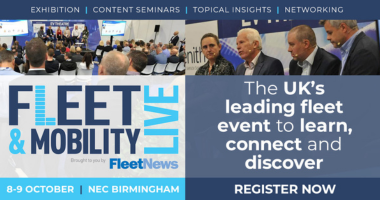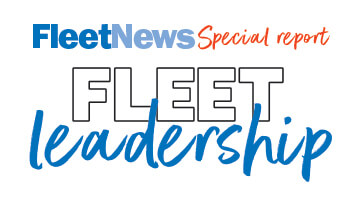Fleets were given access to a wealth of information and advice at the recent Fleet
News Managing Risk in Fleet Conference, sponsored by Zurich.
As well as hearing expert financial advice from experts at Deloitte, the audience was able to glean real-world examples of effective risk management from fleet operators who have introduced systems and policies in their own companies.
In the first group session of the day, four experienced fleet industry professionals gathered to offer a blueprint to a cost-effective fleet.
The session included changes to fleet policy, new ideas of vehicle acquisitions, the introduction of new technology and financial changes which will impact on businesses.
Expert panel: Blueprint to a cost-effective fleet
Ross Jackson, managing director, Fleet Operations:
“Re-evaluate everything that you do and make sure that the reasons you went down a certain route still hold true. If you lease vehicles, take out the daily rental part of the contract, look at sourcing tyres from a different supplier.
"Put simply, you must manage and understand your cost base.
“There are quick wins for fleets, such as looking at accident costs. This is the biggest way to impact on costs.
"The market now is different to what it was six or 12 months ago. We’re in a state of turmoil and what might have been right six months ago may not be right now. Just check on things – even if the decision was taken only yesterday.”
Julie Jenner, chairman of ACFO
“You must know your costs before you can manage them.
"Be aware of the factors which will influence the running of your fleet, carry out regular reviews and use experienced professionals, either from consultants or through your leasing provider.
"Now, more than ever, it is worth partnering with a leasing company as they have the expertise. The message is: help is out there.”
David Rawlings, managing director, Business Car Finance
“Challenge your management to reduce the company’s business miles. This will save fuel and cut wear and tear on vehicles.
"You need to make your company car driving staff’s time more effective. You need to get journey planning, fuel spend and SMR costs sorted before you go and order vehicles.”
Nicky Simpson, service director – fleet management solutions, Amey
“You need to look at all costs and take a long-term view. Don’t rush into something because it looks good at the time.
"The worry is that people will see bargains and buy them, but they will be hit later, such as with poor residual values.”
Finance Action plan
Industry experts at Managing Risk in Fleet have drawn up a list of tips to help fleet managers control costs within their company.
The 11 items to consider are:
- Prepare for future changes – a lower CO2 cap may be introduced for cars to qualify for the 10% benefit-in-kind tax band in future. It may fall to 110g/km to match the qualifying point for 100% first year capital allowances.
- Review free fuel for private mileage – drivers may be paying more in tax than the benefit they are receiving. The employer also pays tax for providing free fuel, meaning it costs a significant amount to provide a relatively small benefit.
- Review your funding method – many organisations will be funding their fleet based on historical decisions which may no longer be valid.
- Assess the carbon footprint of your fleet – with a growing number of CO2-based taxes, the carbon footprint of your fleet will determine its cost now and for many years into the future.
- Ensure you review wholelife after-tax costs instead of simply comparing headline costs such as lease rates. Include fuel consumption, National Insurance costs, tax relief and VAT recovery in your calculations.
- Consider the cost of the new capital allowance regime – depreciation is the enemy of the system for outright purchase fleets. Review your choice list to ensure you choose cars with low depreciation and low emissions.
- Implement a 160g/km of CO2 or below policy on the majority of your fleet to make the most of the potential savings from the capital allowance regime.
- Police your fleet policy – ensure managers are implementing policies correctly and maintaining them, particularly with regard to fuel costs and mileage.
- Review your assets – ask what your vehicles are being used for and why you are using them.
- De-bundle some services currently provided by a single supplier – can another company provide a better deal for rental or tyre replacement individually, for example.
- Challenge managers to find effective ways of reducing business mileage – this is a quick
- win to reduce costs.
- Review your policy, processes and suppliers – the fast-changing nature of the market means current policies may be out of date.
Case study: Small fleet
Company: Chamberlain Doors
Managing director: Karen Diggle
Fleet size: 40 vehicles
For a company with a relatively small fleet of 40 vehicles, Chamberlain Doors is making a big noise in the field of safety and risk management.
The Bolton-based garage door specialist has implemented policies that have resulted in a whole year (2008) without incidents or claims to its vehicle fleet – that’s one million miles its drivers have covered in total without a hitch.
And the company is now aiming to repeat the performance this year – by the beginning of April its fleet was still incident-free and had racked up 250,000 miles between the vehicles.
Managing director Karen Diggle, who has driven the company’s health and safety policy, said: “Our approach has been to keep it simple. We monitor what we’re doing, revise it if necessary and extend the policy to new areas.
“The simple thing to remember in this area is that you haven’t got to reinvent the wheel.”
Among Chamberlain Doors’ policies which built towards a safer fleet are a few key staples – all drivers have to reverse into their parking space (cutting down on rearward manoeuvring with limited vision) and there are regular bulletins issued to drivers.
These bulletins include advice on safe driving, information on driving when taking medication, winter driving tips and driver tiredness.
Drivers also have to complete daily road-worthiness checks covering oil, water and tyre levels, lights and load security. Drivers must report any findings immediately.
The company also checks staff driving licences every six months, and has mobile phone and smoking bans in place, with plenty of reminders to staff.
Case study: large fleet
Company: Inspired Gaming
Group fleet manager: Gary Black
Fleet size: 1,400 vehicles
Gaming machine operator Inspired Gaming has reduced its accident repair costs by nearly half after undertaking a review of the fleet.
The company, which trades as Leisure Link, had an ‘unacceptable’ own-fault accident rate driven by several key factors – a high staff turnover rate, irregular reporting, lack of management interest in the fleet operation, and a lack of pride among staff for their vehicles.
As a result, group fleet manager Gary Black instigated Project Prang to focus on driver safety, identifying drivers with higher than average speeding/accident rates, improving vehicle servicing and gaining buy-in from management.
Much of the information was published in an internal company fleet newspaper.
As a result, between 2003 and 2007 the company saw a 9% reduction in servicing costs, 48% cut in accident repair costs, 21% reduction in speeding fines and a 7% boost in residual values at auction.
Black said: “You need to identify your weaknesses and challenges. It is good to encourage some competition among drivers, but also don’t be afraid to name and shame the worst offenders.”


















Login to comment
Comments
No comments have been made yet.